8:57 AM 11/1/2020 - Mike Nova's favorite articles on Inoreader Far-right militia groups fixate on Election Day doomsday scenarios
- Get link
- X
- Other Apps
The News And Times Blog | Latest Post | Headlines | In Brief
| Mike Nova's favorite articles on Inoreader |
|---|
| Far-right militia groups fixate on Election Day doomsday scenarios |
Sun, 01 Nov 2020 13:49:14 +0000.jpg) For some far-right militant groups, Election Day represents more than just the moment America chooses its next president. Its become a rallying cry to prepare for a far-flung prophecy of impending civil war. The chatter that began among these groups over the summer primarily over the Black Lives Matter protests, the presence of antifa and coronavirus restrictions has taken a darker turn in recent weeks. Fueled by allegations of mail-in ballot fraud, shouted from the presidents Twitter feed and conservative media outlets, a new spate of racial justice protests in places like Philadelphia and paranoia over further coronavirus restrictions, some militias have begun doomsday prepping for Election Day. So far, the rhetoric has largely been inflammatory posturing, threats and showmanship, according to several researchers who monitor online extremism. And despite scattered reports of militia members showing up with guns to polling stations during early voting, there is no sign of the groups presenting a coordinated threat on Election Day. But a strain of anticipation runs throughout the groups chatter, driven by rumblings of potential leftist violence on far-right blogs by conservative cable news personalities. President Donald Trumps uneven disavowals of these militant groups has only been taken as an endorsement of their chest-thumping. Some groups like the Oath Keepers, which recruits from police and military veterans, and Patriot Front, which recruits and trains white supremacist extremists have been frank, telling their most loyal followers to prepare for war against violent, rioting leftists on that day. During a Thursday appearance with Infowars Alex Jones, a conspiracy theorist, Oath Keepers militia leader Stewart Rhodes said the groups battle-hardened veterans would be standing vigil at polling locations to protect voters from coercing and threatening anti-Trump forces. Many of these militant groups which often espouse anti-government, white supremacist and pro-Trump ideologies are disconnected and diffuse, without large bases of devoted members. But researchers and government officials say they still represent an acute threat. A recent report from the Center for Strategic and International Studies found far-right extremists were behind two thirds of reported terrorist plots and attacks in the U.S. this year. And a recent Department of Homeland Security threat assessment warned white supremacist extremists was the most persistent and lethal threat in the homeland. "The dangerous thing about Election Day is that groups can plan for it, said Graham Brookie, director of The Atlantic Councils Digital Forensic Research Lab, a research group that studies the spread of disinformation. There will be a moment of opportunity and there will be a moment of information about who potentially wins the election or what the conversation is about the results of the election. And they'll be looking for signals and dog whistles. In the runup to this years election, Trump and his allies have repeatedly warned the outcome could be easily rigged because of the coronavirus-driven rise in mail-in and early voting a contention not supported by evidence or recent electoral history. By this weekend, nearly 90 million Americans had already cast their ballots roughly two thirds of the total number of Americans who voted in 2016. The president and his circle have paired these warnings with dire predictions of leftist and antifa street violence, an allegation that dramatically overstates the prevalence of such violence and inaccurately conflates lawful protesting with leftist violence. Conservative media has hyped these claims, highlighting moments of rioting and looting amid protests in places like Philadelphia, where demonstrators took to the street after police fatally shot a Black man. Conservative outlets like Fox News and OAN have also focused on attacks against police during the protests. The attention has ignored other elements of the civil unrest, including the increased presence of far-right militias. Mostly right-wing media is ignoring right-wing militia activity entirely, said Angelo Carusone, the president of the progressive watchdog Media Matters. But they are pushing reports of potential left-wing violence and covering reports of [law enforcement officers] prepping for election day violence without specifying a side that it's coming from. And with the election coming up, militia leaders have responded to the possibility of leftist violence by recruiting, training and strategizing should the results not go their way. Although there has been occasional chatter regarding poll monitoring, much of the discourse in extremist communities has centered on speculation of what could happen in different election scenarios, said Jared Holt, formerly of Right Wing Watch and currently a visiting research fellow at the Digital Forensic Research Lab. While much of this speculation is seen as empty saber rattling, government officials and researchers say these extremist groups, which are frequently aligned with white supremacist ideologies, represent a potent threat. Since 2018, white supremacist extremists have conducted more lethal attacks in the United States than any other violent extremist movement, according to the DHS threat assessment. The report did, however, also note a significant uptick in violence against law enforcement and government symbols in 2020. The pandemic has exacerbated these threats, as anti-government movements chafe against restrictions to curb the spread of Covid-19. Federal officials recently arrested a group of extremists who were allegedly training with the intent of instigating a civil war and kidnapping the Michigan governor in retaliation for strict coronavirus protocols. These frustrations, the DHS report noted, could converge on the electoral process, especially the open-air, publicly accessible parts like polling places and voter registration events. The report called these places likely flashpoints for potential violence. A recent report from Armed Conflict Location & Event Data Project, in partnership with MilitiaWatch, suggests that one predictive factor for potential militia and street gang activity is whether an area is perceived to be the basis for leftist coups. Critical election states like Georgia, Michigan, Pennsylvania and Wisconsin fall into this category, as do traditional hotbeds of militia activity, such as Oregon. Additionally, places with a strong Democratic presence, but not an overwhelming one, tend to be staging grounds for such activity. Over the past month, the report said there had been robust recruitment and training activities from militia and street gang organizations. These groups have varying goals. The boogaloo movement, for instance, aims to overthrow the state and is anti-cop. Patriot Fronts goal is to establish a white ethno-state. The Three Percenters are virulently against gun control and share a unanimous antipathy towards the nebulous radical left, a hodgepodge of antifa, Black Lives Matter protesters, Democrats and progressives. There is a high possibility, researchers have noted, that militia posturing around the election will not result in actual demonstrations or violence. But as long as conservative rhetoric focuses on playing up left-wing violence, warned Media Matters Carusone, it will help perpetuate militia culture. Hyping warnings about potential left-wing violence is significant because that's what we're seeing militia groups planning around, he said. We are seeing a similar theme in militia/extremist activity that they're hyper focused on potential for left-wing groups to become violent on or after the election. The feedback loop was on display when Rhodes appeared on Infowars to promote his Oath Keepers Election Day activities and predicted a civil war in the elections aftermath. Its not going to be an easy fight for the radical left, he told Jones. Theyre going to get swamped with very competent, battle-hardened veterans on our side. Steven Overly contributed to this report. |
| Spain rocked by second night of clashes over coronavirus measures |
| Sun, 01 Nov 2020 13:49:11 +0000
|
| Britain starts accelerated review for AstraZeneca's potential COVID-19 vaccine |
| Sun, 01 Nov 2020 13:49:01 +0000 AstraZeneca Plc said on Sunday Britain's health regulator had started an accelerated review of its potential coronavirus vaccine. |
| Russia rules out cutting fossil fuel production in next few decades |
| Sun, 01 Nov 2020 13:48:55 +0000
Energy minister says Moscow will also focus on clean-burning hydrogen and carbon capture Russia has no plans to rein in its production of fossil fuels in the coming decades despite the global efforts to shift towards low-carbon energy, according to its energy minister. Alexander Novak told the Guardian that Russia did not see that we will achieve a peak in [gas] production anytime soon because the worlds appetite for gas would continue to grow in the decades ahead despite its growing number of climate targets. Continue reading... |
| Russias Four Wars: Return Of The Russian Leviathan Wins Pushkin House Prize - Forbes |
| Sun, 01 Nov 2020 13:48:02 +0000 Russias Four Wars: Return Of The Russian Leviathan Wins Pushkin House Prize Forbes |
| Силовики стреляют на воскресном марше в Минске |
| Sun, 01 Nov 2020 13:47:44 +0000 В Минске проходит воскресный "Марш против террора". Силовики стреляют в воздух и задерживают демонстрантов. Видео из столицы Беларуси. |
| Global Wine Production Slumps For Second Year As Industry Crushed By Virus |
| Sun, 01 Nov 2020 13:47:40 +0000 Global Wine Production Slumps For Second Year As Industry Crushed By Virus Tyler Durden Sun, 11/01/2020 - 08:45 The International Organization of Vine and Wine (OIV) released its global wine production report, warning that after the high production year of 2018, for the second consecutive year, wine production volume will be below average, due to low volumes from South America and European output caps following the virus-induced downturn that crippled sales. In a zoom call, OIV Director General Paul Roca said the virus-induced global downturn has resulted in declining wine prices, output slumps, and dented demand. Roca said the pandemic worsened geopolitical tensions, and in some regions, led to tariffs, and a decline in international trade. He said lockdowns and other social distancing measures limited the flow of goods through cities and towns, along with hindering flows on an international basis, adding that the disruption led to disorder in distribution channels, limited production at wine-making facilities, and also resulted in inventory builds.
OIV estimates the 2020 global wine output will be around 253.9 million and 262.2 million hectolitres, with a midrange estimate at 258 million hectolitres. As OIV points out in the slide below:
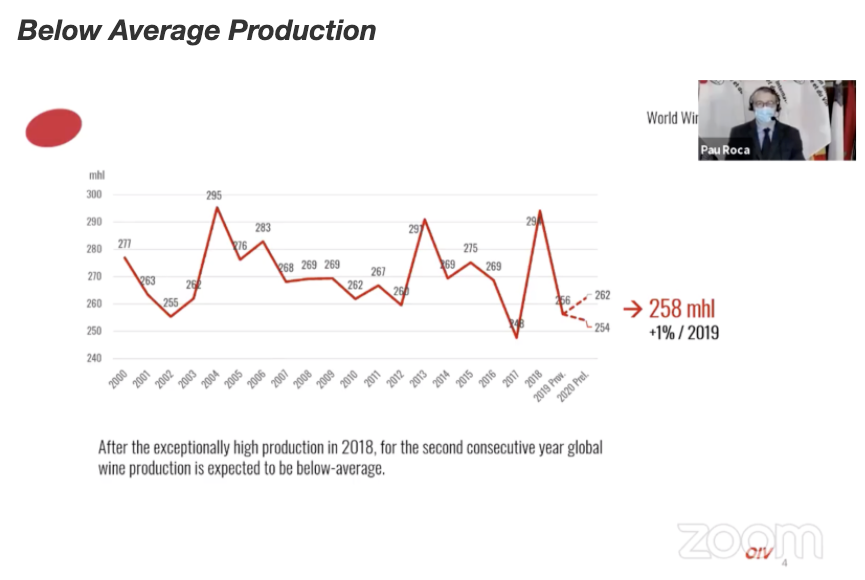 In terms of supply, Roca said the current situation is not entirely "bad news" given the abundance of worldwide inventory:
OIV said Europe had desirable growing conditions but output remained lower than average as producers and governments limited production during the virus pandemic. France collected 20% fewer grapes this year because of the collapse in sales. Expectations for the world's three largest wine producers - Italy, France, and Spain - will have output around 159 million hectolitres, up 5% over 2019 levels but still below average. 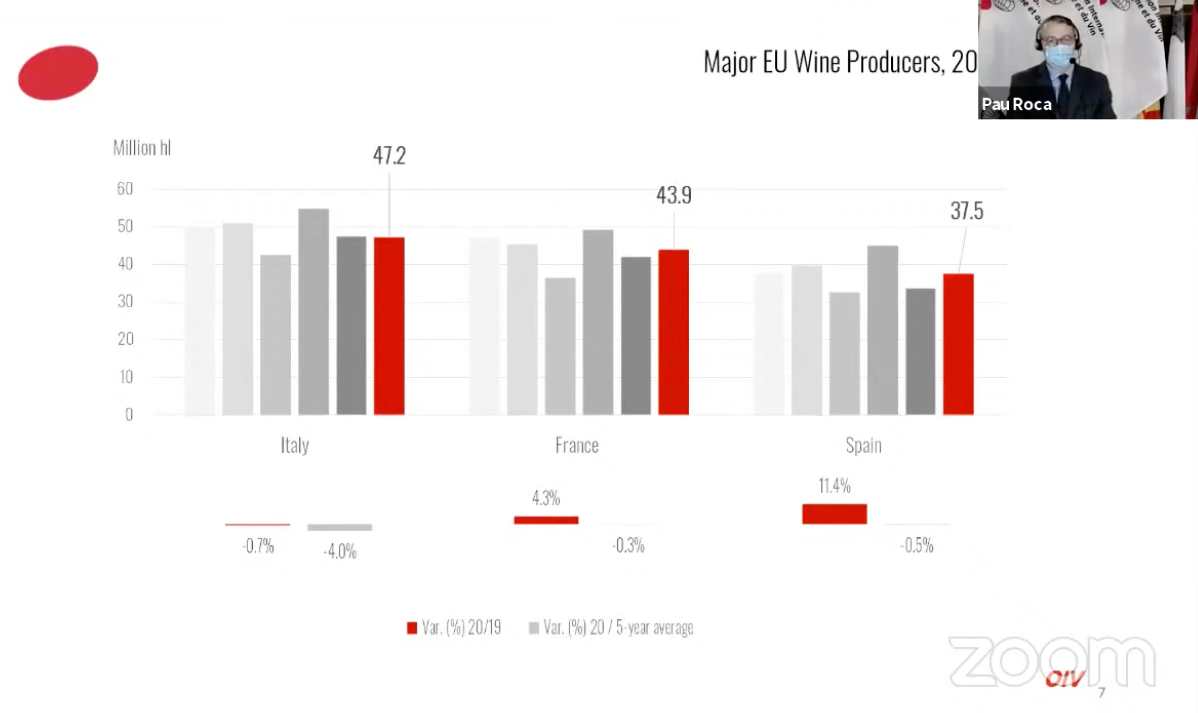 As for wine country in the Southern hemisphere, output totals could decline by as much as 8% from 2019 to 49 million hectolitres. The largest declines were seen in Argentina (-17% YoY), Chile (-13%) and Australia (-11%). 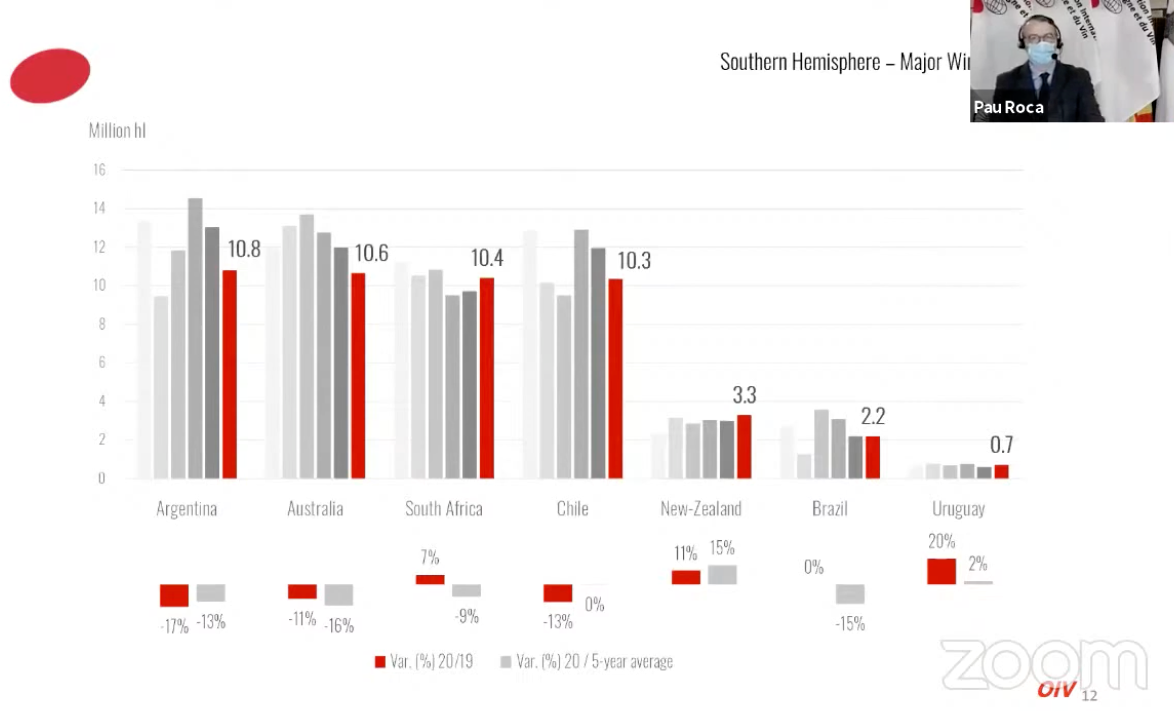 In the US, output estimates for the 2020 year are around 24.7 million hectolitres, up 1% YoY, but OIV notes the forecast could be heavily revised because of the wildfires in Napa Valley, California. Top 15 Exports By Volume And Value 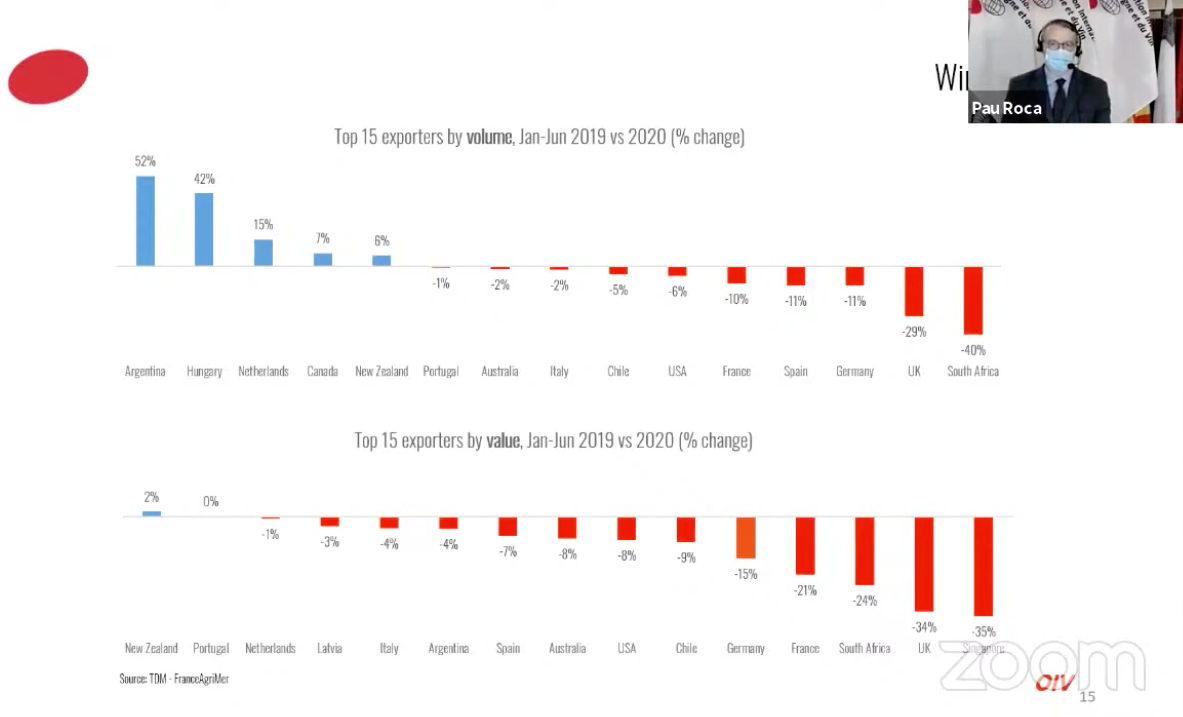 Here's the full OIV press conference To sum up, the global wine industry was already under pressure before 2020, the virus pandemic just made everything worse. |
| Microsoft Edge Beats Google Chrome With This Brilliant New Feature - Forbes |
| Sun, 01 Nov 2020 13:47:32 +0000
|
| Google ad costs, not its alleged monopoly, irks businesses - ABC News |
| Sun, 01 Nov 2020 13:47:25 +0000
|
| France: President Macron says he understands Muslim shock over Prophet cartoons |
| Sun, 01 Nov 2020 13:27:17 +0000 "I understand and respect that we can be shocked by these caricatures. I will never accept that we can justify physical violence for these caricatures," Macron said in an interview. |
| Several injured after hayride accident - WTVY |
| Sun, 01 Nov 2020 13:27:10 +0000 Several injured after hayride accident WTVY |
| Global Security News- globalsecuritynews.org: Mike Novas favorite articles on Inoreader: FOX News: Federal judge orders USPS to take extraordinary measures to deliver mail-in ballots on time |
| Sun, 01 Nov 2020 13:26:57 +0000 A federal judge in Washington state on Friday ordered the U.S. Postal Service to take extraordinary measures to deliver mail-in ballots in Wisconsin and Michigan in time for Election Day.
The post Mike Nova's favorite articles on Inoreader: FOX News: Federal judge orders USPS to take 'extraordinary measures' to deliver mail-in ballots on time first appeared on Global Security News- globalsecuritynews.org. |
| The National Interest: When Victory Means Loss: Imperial Japans Win at Coral Sea Came at a High Price |
| Sun, 01 Nov 2020 13:26:47 +0000 Sebastien Roblin History,  Americas first fleet carrier had fallen fighting precisely the kind of battle it had spent over a decade developing tactics for.Here's What You Need To Remember: The seemingly inconclusive battle was a turning point for the Allies. Australia and its foothold in New Guinea remained secure, forcing Japanese forces to commit to a costly and ultimately unsuccessful ground campaign on the latter island. Meanwhile, the damaged Shokaku could not participate in the Battle of Midway, an even larger carrier battle that brought an end to Japans advances in the Pacific War. In the first five months of the Pacific War, the Imperial Japanese military won an almost uninterrupted string of victories, seizing Burma, Indonesia, the Philippines, Singapore, and most of the Solomon Islands and New Guinea. However, Australia remained a thorn in Japans southwestern Pacific flankone which needed to be cut off from U.S. reinforcements before Japanese troops could invade. Though Adm. Isoroku Yamamoto planned on drawing U.S. carriers into a decisive battle around Midway Island in June 1942, he first authorized Operation Mo in April to isolate Australia by dispatching two separate invasion fleets to seize Tulagi (part of the Solomon Islands) and Port Moresby, a key supply point for Australian troops on New Guinea. However, American cryptographers had broken the Japanese naval code and learned the details of the plan in a matter of days. Adm. Chester Nimitz decided to dispatch the Navys fleet carrier, the Lexington, and the more modern Yorktown to bushwhack the Japanese invasion force. The American ships would confront a Japanese screening force that grew to include the fleet carriers Shokaku and Zuikaku as well as the light carrier Shoho, commanded by Adm. Takeo Takagi. The two opposing carrier groups mustered nearly the same number of aircraft: 127 to 128 bombers and fighters. The Lexingtons wing included thirty-five SBD Dauntless dive bombers, twenty-one F4F Wildcat fighters and twelve TBD Devastator torpedo bombers. Japanese marines seized Tulagi on May 3 without opposition, while the second force steamed for Port Moresby. However, on May 4 aircraft from the Yorktown raided the amphibious fleet off of Tulagi, sinking a destroyer and five support vessels. Then the carrier rendezvoused 370 miles south of Guadalcanal with the Lexington and an Australian squadron to form Task Force 17. Both Japanese and American forces were now aware of the others presence in the Coral Sea, northeast of Australia, but did not know each others exact location. What followed was the first carrier battle in historyand, indeed, the first naval battle in which the opposing ships never entered each others visual range. The challenges of this new form of warfare began with locating the moving enemy force amidst the vastness of the ocean. The available radars then were short ranged and unreliable, so the seas had to be combed by submarines, flying boats, smaller float planes and carrier-based scouts. The scouts also had to evade defending aircraft long enough to radio the position of the opposing fleet. For two days, Japanese and American aircraft probed for the rival fleets position but only received fragmentary reports for their efforts. In fact, the American fleet had bumbled in between the Japanese invasion force to the south and the carriers assigned to protect them, without either side being aware of how close they were to each other. Finally, at 8 a.m. on May 8, a Japanese scout detected what it believed to be a carrier and a heavy cruiser. Once the enemys position was verified, a carrier had to quickly launch a strike force before the enemy bombers returned the favor and caught its fuel and bomb-laden aircraft on the flight deck. While approaching, strike planes would have to evade or overwhelm the defending fighters of the Combat Air Patrol (CAP), which were usually quite effective at shooting down slower, bomb-laden attackers. Then, actually hitting an enemy carrier with unguided torpedoes and bombs posed a major challenge, as the huge vessel performed evasive maneuvers and its dozens of rapid-fire flak guns filled the skies with streams of hot metal and black clouds of shrapnel. However, sometimes only a few hits were needed. Carriers are stuffed full of aviation fuel, bombs and dozens of warplanes loaded with plenty of both. Just a few lucky hits could ignite massive fires, potentially leading to cascading explosive chain reactions. At 9 a.m., fifty Japanese warplanes swooped down upon the ships reported by the scout planewhich were in fact the hapless U.S. destroyer Sims and the oiler Neosho. The Sims was broken in two and sunk with all but fourteen hands, while the Neosho was set ablaze. By then, the American carriers had launched ninety-three aircraft towards a sighting of the Japanese amphibious fleetalso misidentified as a carrier force! However, a ground-based B-17 bomber reported a new sighting at 10 a.m., and the aircraft were redirected. At 10:40 a.m., the Devastator and Dauntless bombers of the Lexington swooped down upon the Japanese light carrier Shoho, which could carry thirty-five aircraft on its 205-meter-long flight deck. Confronted by a CAP of just two outdated Mitsubishi A5M fighters and a single Zero, the dive bombers managed to land thousand-pound armor-piercing bombs on the deck of the Japanese warships. Meanwhile, the Devastators struck the beleaguered Shoho with five torpedoes in the high water mark of the TBDs generally unhappy combat career. Aircraft from the Yorktown soon joined in. At 11:35, less than an hour after the attack commenced, as the Shoho sank below the wavesthe first carrier lost by Japan in World War II, prompting SBD pilot Robert Dixon to report back: Scratch one flat top! Only 203 of the 834 sailors and aviators aboard the Shoho were rescued. Five hours later, the Lexingtons radar picked up a counterstrike, including twenty-seven D3A Val and B5N Kate single-engine dive and torpedo bombers, respectively. However, its CAP managed to down eight of the attackers, and the rest aborted mission. A subsequent Japanese night attack proved even less successful. The following morning, both the Yorktown and Lexington on one side, and the Zuikaku and Shokoku on the other, were ready for round two. Their scouts spotted each others fleets almost simultaneously at 8:20 a.m., and exactly fifty-five minutes later both carrier groups launched dozens of warplanes to annihilate the other. The Yorktowns strike force found the Japanese fleet by 10:30, and the Lexingtons planes followed an hour later. This time, however, the American aircraft were met by over a dozen Zero fighters, which claimed three Wildcats and two SBDs for two losses. All eleven torpedoes launched by the Lexingtons Devastators failed to hit; American torpedoes were notoriously unreliable at this stage in the war. The two carrier wings dive bombers were only a bit more successful, landing three thousand-pounders on the Shokaku. But those three strikes inflicted more than 220 casualties and crippled its flight deck. At noon its captain, Takatsugu Jojima, decided it was time to tap out and withdrew from the battle. But meanwhile, the Shokakus own attack planes had struck a powerful blow. Though the Lexington detected bogies approaching from seventy miles away, the nine Wildcats in its CAP accidentally overflew the eighteen low-flying B5N torpedo planes. Flak and defending SBDs eventually shot down seven, but the survivors executed a pincer attack on the Lexington and managed to land two hits with their 1,870-pound Type 91 torpedoes, rupturing the huge ships aviation-gas storage, jamming both its elevators and breaching the water main, necessitating the shutdown of several boilers. Minutes later, thirty-three D3A dive bombers swooped in, striking the Yorktown once and the Lexington twice, blowing out a five-inch gun turret on the latter and spraying shrapnel across its funnel. As the American and Japanese strike forces retired to their carriers, they ran into each other and additional aerial duels sent more aircraft plummeting into the sea. Such was the chaos that the Japanese and American air wings each lost eight more aircraft while attempting to land, and numerous warbirds returned so badly damaged they were promptly pitched over the flight deck. Lady Lex had suffered grievous damage, but still managed to launch additional CAPs and recover all of its aircraft by 2 p.m. However, at noon, the fires started when leaking gas vapors caused a store of aviation gasoline to erupt in a huge explosion, and a chain reaction of additional blasts slowly consumed the ship throughout the afternoon. One explosion blew the elevator a foot above the flight deck, and by 4 p.m. the below decks area became entirely uninhabitable. An hour later, Capt. Frederick Sherman finally sounded the call to abandon ship. He would not leave his command behind until over 2,700 sailors, marines and aviators evacuated the stricken vessel, leaving behind 216 dead. The destroyer USS Phelps delivered the death blow, launching five torpedoes into the flaming wreck. Finally, the Lady Lex slipped gently under the sea, staying even on its keel even in its final moments. Both the Japanese and American fleets withdrew after May 8, too battered to continue the fight. The planned Japanese amphibious landing at Port Moresby was canceled. In purely material terms, the Battle of the Coral Sea was a Japanese victory. Although the Imperial Japanese Navy lost significantly more personnel (966 to 656) and aircraft (ninety-two to sixty-nine), its pilots had sunk a full-sized fleet carrier in exchange for a smaller light carrier. However, the seemingly inconclusive battle was a turning point for the Allies. Australia and its foothold in New Guinea remained secure, forcing Japanese forces to commit to a costly and ultimately unsuccessful ground campaign on the latter island. Meanwhile, the damaged Shokaku could not participate in the Battle of Midway, an even larger carrier battle that brought an end to Japans advances in the Pacific War. Americas first fleet carrier had fallen fighting precisely the kind of battle it had spent over a decade developing tactics for. Just a year later, a new Essex-class carrier was christened USS Lexington (CV-16), and would remain in U.S. Navy service until 1991. Sébastien Roblin holds a Masters Degree in Conflict Resolution from Georgetown University and served as a university instructor for the Peace Corps in China. He has also worked in education, editing, and refugee resettlement in France and the United States. He currently writes on security and military history for War Is Boring. This article first appeared several years ago. Image: Wikipedia. |
| "us national security" - Google News: At Least 51 Dead in Turkey, Greek Islands Earthquake - Voice of America |
| Sun, 01 Nov 2020 13:26:31 +0000 At Least 51 Dead in Turkey, Greek Islands Earthquake Voice of America |
| Stars and Stripes: UK says four-week coronavirus lockdown may have to last longer |
| Sun, 01 Nov 2020 13:26:19 +0000 Cabinet minister Michael Gove said it was the government's "fervent hope" that the lockdown would end on time, but that could not be guaranteed. |
| Trump: 5 or more countries to make peace with Israel after election - The Jerusalem Post |
| Sun, 01 Nov 2020 13:13:05 +0000 Trump: 5 or more countries to make peace with Israel after election The Jerusalem Post |
| EU Sanctions Russian Officials Over Navalny Poisoning, Citing Chemical Weapons Use - KVNF Public Radio |
| Sun, 01 Nov 2020 13:12:52 +0000 EU Sanctions Russian Officials Over Navalny Poisoning, Citing Chemical Weapons Use KVNF Public Radio |
| The China Ambassador's Son Who Got Rich in Trump's Swamp - The Intercept |
| Sun, 01 Nov 2020 13:12:44 +0000 The China Ambassador's Son Who Got Rich in Trump's Swamp The Intercept |
| Trumpism And Trump trumpismandtrump.com: mikenov on Twitter: Selected News Articles thenewsandtimes.blogspot.com/2020/11/select pic.twitter.com/vKB20rk3QN |
| Sun, 01 Nov 2020 13:12:11 +0000
The post mikenov on Twitter: Selected News Articles thenewsandtimes.blogspot.com/2020/11/select pic.twitter.com/vKB20rk3QN first appeared on Trumpism And Trump - trumpismandtrump.com. |
| realDonaldTrump on Twitter: Joe Biden called Black Youth SUPER PREDATORS. They will NEVER like him, or vote for him. They are voting for TRUMP. |
| Sun, 01 Nov 2020 13:12:03 +0000 Joe Biden called Black Youth SUPER PREDATORS. They will NEVER like him, or vote for him. They are voting for TRUMP. 4687 likes, 1096 retweets |
- Get link
- X
- Other Apps

.jpg)
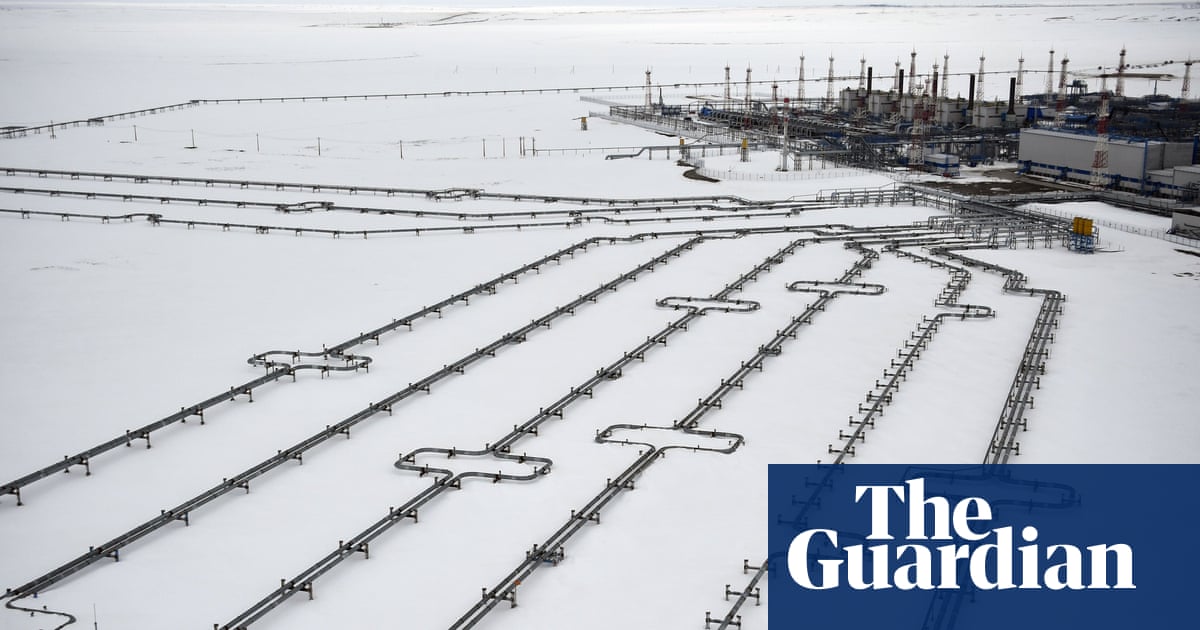

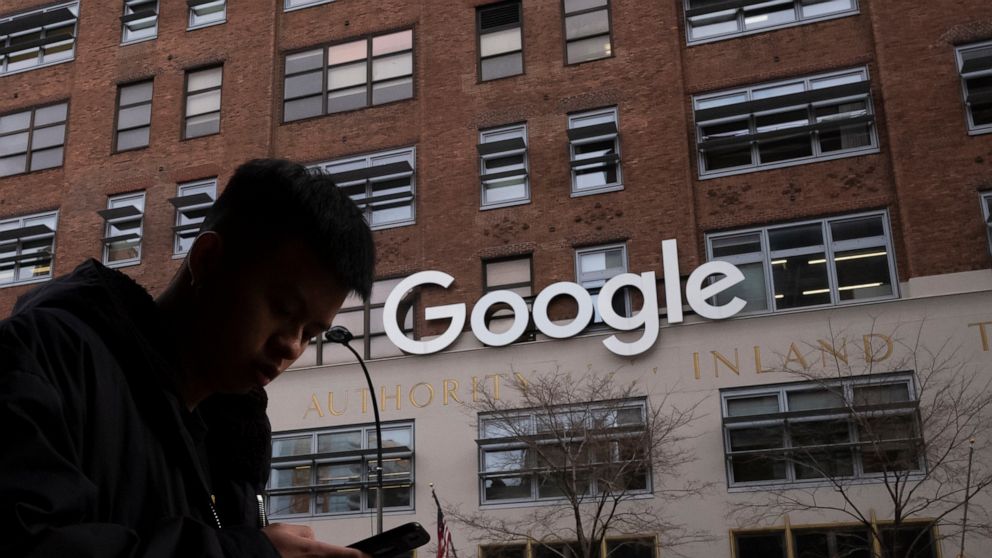
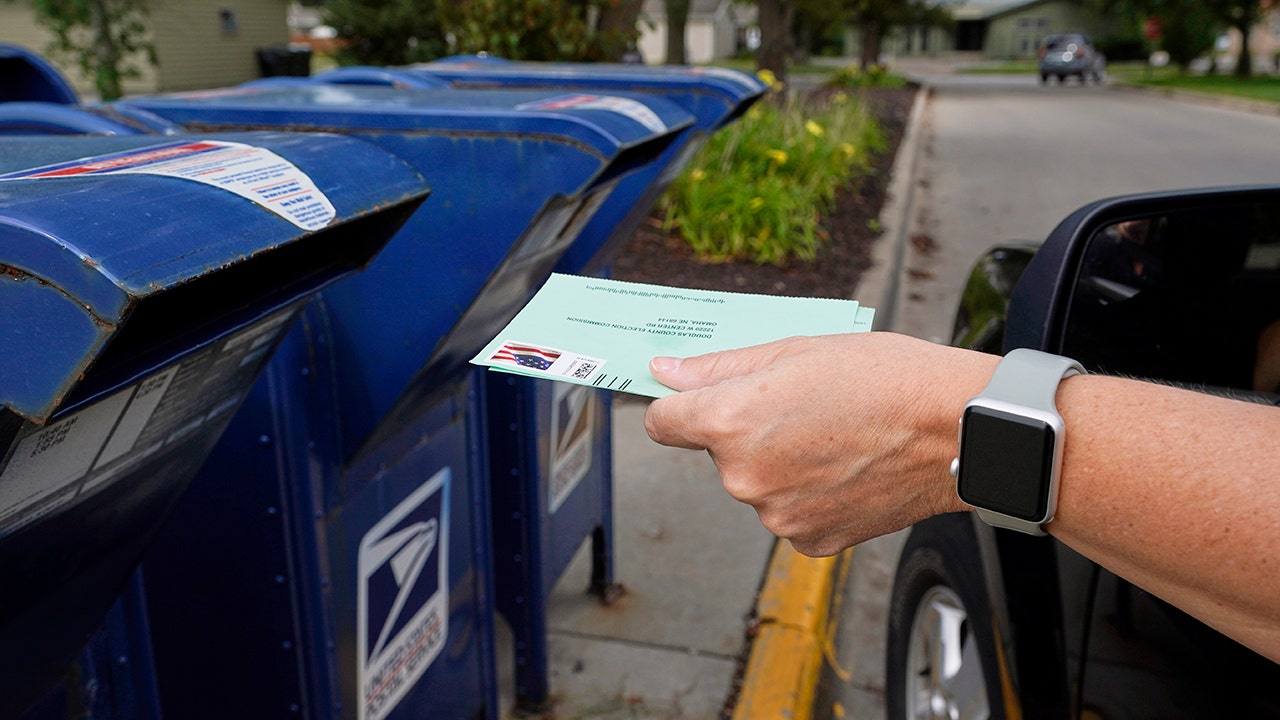





Comments
Post a Comment